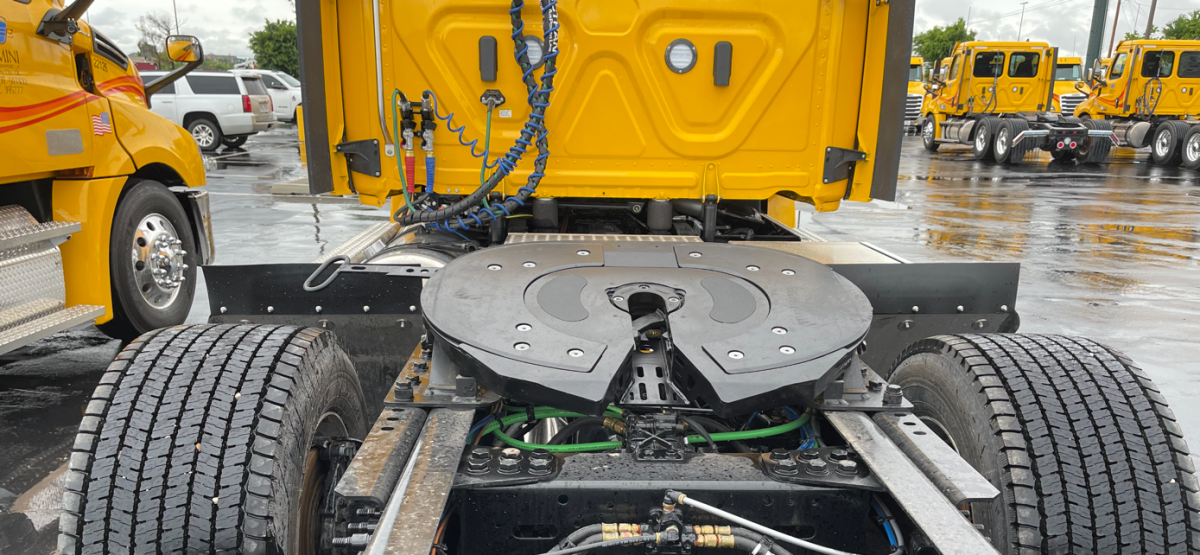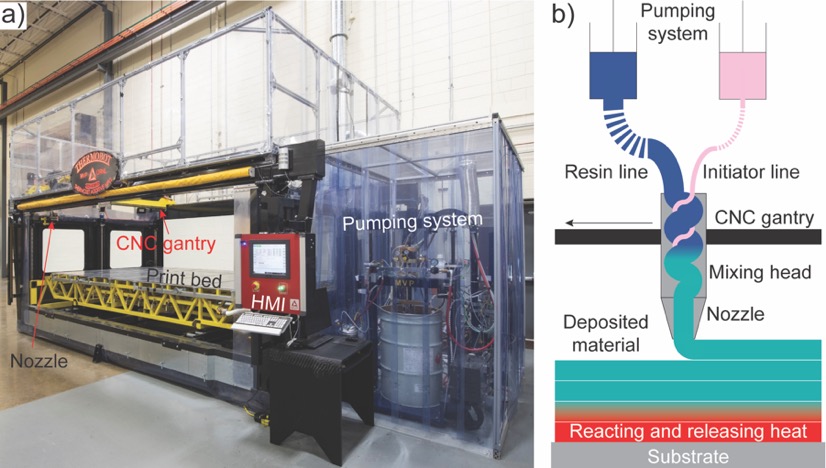
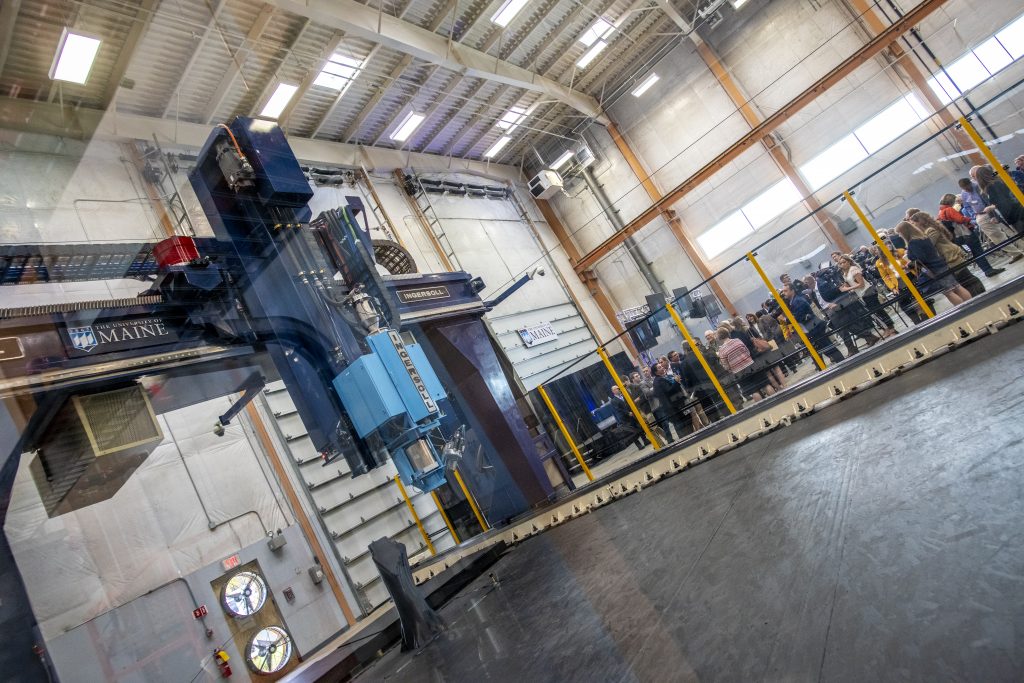
Revolutionary Research
Universities play a pivotal role in research and development. In 2020, academic institutions spent $86.4 billion on R&D, according to the National Center for Science and Engineering Statistics. Some of those dollars – and the resulting projects – impacted materials, technologies, applications and more in the composites industry.
This year’s annual feature article on university research highlights four composite-related projects, ranging from fundamental science examining defects in thermoset materials to envelope retrofits making homes more energy efficient.
Residential Retrofits Lead to Energy Efficiency
Project: Composite Panels for Envelope Retrofits
School: The University of Tennessee, Knoxville
Location: Knoxville, Tenn.
Principal Investigator: Uday Vaidya
The residential sector accounts for approximately 21% of total U.S. energy consumption, and the average household is responsible for releasing 70% more CO2 emissions than the average car, according to the U.S. Department of Energy. Researchers at the University of Tennessee, Knoxville (UTK) have developed a solution to help combat the problem.
“There is a strong need for dependable, cost-effective building envelope retrofit solutions in order to meet decarbonization targets,” says Uday Vaidya, Governor’s Chair in Advanced Composite Manufacturing at UTK-Oak Ridge National Laboratory. “We created a modular, overclad composite panel system that provides an innovative way to modernize buildings – and make them more energy efficient – without a lot of changes to the base structure.”
During the first phase of the project, UTK collaborated with Oak Ridge National Laboratory (ORNL) to develop the material solution. The team designed sandwich construction panels made from fiberglass, epoxy resin, polyurethane foam and pultruded profiles. The panels, which are five to six inches thick and measure either 4 x 12 feet or 5 x 12 feet, are fabricated using vacuum infusion and braiding techniques.
“They are very lightweight – less than four pounds per square foot – so they can be easily carried by two people and installed with small equipment,” says Vaidya. “The panels provide minimal disruption to existing structures, which is key. They are designed with all the necessary connections to homes and gutters for drainage.” The panels can also be customized to feature the desired finish, or wall cladding, such as siding, can be placed on top after installation.
UTK teamed up with the Building Technologies Research and Integration Center at ORNL for the second phase to identify homes for a demonstration project. Together, they selected 13 homes in the Knoxville area, each approximately 2,500 square feet, to receive a full-house envelope retrofit.
“Collectively, this provides not only a very strong demonstration, but actual usage in a commercial application,” says Vaidya. “Any future work will build off of this.”
UTK and ORNL are now collaborating with several organizations on materials, design, manufacturing and installation of the panel systems, which they anticipated beginning at the end of September. Partners include IACMI – The Composites Institute’s Scale-Up Research Facility, DB Technologies, Compsys Inc. and Olin. While certain composite materials will be used for the demonstrator panel system, Vaidya says the design allows for flexibility.
“Ultimately, we are looking for low-cost, high-performance solutions. Economics will be the driver,” he says. “Building construction is continuously innovating, and our approach uses advanced materials in a cost-effective way.”
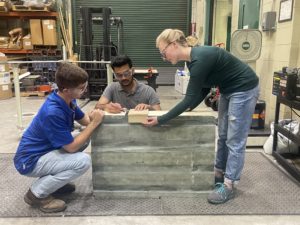
From left, undergraduate researcher John Klepzig and graduate student Vinit Chaudhary work with Alexia Rice, a staff member at UTK, on a composite panel.
Photo Credit: University of Tennessee, Knoxville
Cracking a Critical Curing Problem
Project: Process Modeling of Composite Microcracking
School: UMass Lowell
Location: Lowell, Mass.
Principal Investigator: Marianna Maiaru
Marianna Maiaru began modeling aerospace thermoset composites as a graduate student at Turin Polytechnic Institute in Italy. Working in collaboration with the University of Michigan, she developed computationally efficient multiscale approaches for progressive failure analysis of fiber-reinforced polymer composite structures. Since then, her work with industry and government agencies has further illuminated major technological challenges in composite manufacturing.
Earlier this year, Maiaru received the CAREER Award, an early-career development award from the National Science Foundation that included more than $568,000 in funding. She will use the five-year grant to perform computational modeling to predict damage and to validate her process modeling techniques and predict curing-induced microcracking.
“Extensive microcracking can compromise the strength of the thermoset and contribute to the structure’s subsequent failure,” says Maiaru, an associate professor in mechanical engineering at the University of Massachusetts Lowell. “The failure is very difficult to predict, so when manufacturers take the component out of the oven and see it’s fractured, they typically have to dispose of the part.”
Maiaru’s team will first seek to understand why microcracking occurs during curing, then develop software to predict the microcracking process. “We will subsequently optimize the cure cycle to prevent microcracking,” she says.
One key to predicting microcracking is understanding material behavior during curing. Maiaru will test various thermoset materials used throughout industry, including resins that are more prone to microcracking.
“One of my hypotheses is that resin brittleness influences microcracking,” she says. “Depending on processing conditions, if the resin is a little more brittle in some parts of the cure cycle, then it’s more prone to crack.”
Gaining a clearer understanding of material behavior has industrial implications.
“Microcracking occurs in all different kinds of manufacturing environments, particularly those that include large structures, such as aerospace and wind energy,” says Maiaru. “Companies would be interested in being able to predict if cracking occurs before the material enters production. This would help them save time and money and make higher quality parts.”
While Maiaru’s research is a fundamental science project, she hopes her work ultimately leads to the development of crack-free thermoset materials.
“Our ability to manufacture the next-generation of high-performance, lightweight, complex structures depends upon fabricating damage-free composites with enhanced mechanical properties,” she says.

Marianna Maiaru, shown at the laptop computer, leads a team of researchers at the University of Massachusetts Lowell who are developing software to predict microcracking in composites.
Photo Credit: Umass Lowell
Giving Wings to 4D Printing
Project: 4D Composite Printing
School: Concordia University
Location: Montreal
Principal Investigator: Suong Hoa
Several years ago, Suong Hoa heard a seminar on 4D printing from one of his peers at Concordia University that piqued his interest.
“He was using polymers with shape-changing properties that react to a particular stimulus, such as water or heat,” says Hoa, a professor of mechanical, industrial and aerospace engineering and co-director of the Concordia Centre for Composites. “The idea came to me that we could use 4D printing to make complex composite shapes without the need for molds.”
Since then, Hoa and students at the Centre for Composites have printed and tested various components, including an S shape and a leaf spring. Most recently, they manufactured and performed a feasibility study on adaptive compliant trailing edge (ACTE) morphing wings for unmanned aerial vehicles (UAV) that can replace the frequently used hinged wing flap with one that attaches to the main body wing. The 4D-printed ACTE wing has a flex angle up to 20 degrees.
“Our study shows that a UAV using this kind of wing can support a good amount of load for small or medium-sized vehicles,” says Hoa.
The 4D printing technology developed by Hoa takes advantage of the asymmetry of composite materials.
“Rather than looking at anisotropic properties as a liability, I viewed them as an asset,” he says. “We utilize those properties to make a shape without the need for a mold.”
Standard 4D printing is like 3D printing, however it changes material from location to location. In 4D printing of composites, the material stays the same within a layer, but the fiber orientation changes from layer to layer.
Hoa’s team creates composite structures using an automated fiber placement machine that is similar to a large 3D printer. The machine unrolls carbon fiber prepreg with 10-micron fiber filaments in ultra-thin layers at 90-degree angles from each other onto a flat mold. The layers are then compacted together and cured at 180 C in either an autoclave or oven to create the solid laminate. After curing, the composite structure is cooled to 20 C. During this process, the flat structure becomes curved. The fourth dimension refers to this altered configuration.
The ACTE wings are made from corrugated composites to provide stiffness in the span direction and flexibility in the chord direction. They feature two primary parts – a rigid support section and the active compliant trailing edge, which is fabricated from GFRP skins. Sliding between the upper and lower wing skins, which are connected by linear pair guides, allows the ACTE to achieve a large, continuous bending deformation.
While Hoa and his students are currently refining the analysis, design, manufacturing and testing of the ACTE wings, they have their eyes set on future applications that offer promise for commercialization. For instance, 4D composite printing is well suited for vertical-axis wind turbines, where the main rotor shaft is arranged vertically.
“There are a lot of twists and complex curvature,” he says. “If you were to make a mold, it would be very costly. I have also seen manufacturers construct a flat piece that they bend, and it cracks in multiple places. We should be able to utilize the properties of composites to do a better job.”
Hoa wants to spread the word about the potential of 4D printing.
“When people see 4D printing, they think about plastics. Few people are familiar with the technique for composites,” he says. “Hopefully, people will be open to the new technology.”

Suong Hoa, co-director of the Concordia Centre for Composites at Concordia University, has developed a 4D composite printing technique.
Photo Credit: Concordia University
Solving the Housing Shortage
Project: Sustainable 3D-printed Houses
School: The University of Maine
Location: Orono, Maine
Principal Investigator: Habib Dagher
A team of researchers at the Advanced Structures and Composites Center (ASCC) at the University of Maine are turning to technology to solve a societal concern. They believe 3D printing can help fill the void in low-income housing.
“In the United States, there’s a need for 8 million low-income houses,” says Habib Dagher, professor of civil and structural engineering at the University of Maine and director of the ASCC. “To solve the problem, we need to automate processes and drive costs out of the system. It’s not an easy road forward.”
The ASCC researchers are collaborating with Oak Ridge National Laboratory and the Maine State Housing Authority to design and 3D print a prototype house using sustainable composite materials. These include wood materials, such as sawdust, to create wood flour that is combined with biopolymers to create pellets for 3D printing.
The project falls under the umbrella of the ASCC’s 2020 strategic plan, named Green Energy and Materials (GEM).
“Our goal is to bring green energy and materials to society,” says Dagher. “From an environmental perspective, using bio-based materials – whether from trees or other sources – is an important part of the global fight against climate change.”
As part of this mission, the center first printed a tri-hull boat nearly three years ago. The 25-foot-long, 5,000-pound boat was printed in just three days.
“We validated the feasibility of manufacturing a large structure in one go,” says Dagher. Since then, the ASCC has 3D-printed numerous structures.
The center finished printing the prototype house in October and has placed it outside the lab to go through “the good, old Maine winter,” says Dagher. The weatherproof house, which is heated and fully operational, incorporates sensors to gauge energy efficiency, structural performance, dimensional stability and air quality.
“The house itself is a milestone, of course, but we are focused on advancing material and manufacturing technologies that enable us to build the house,” says Dagher.
To achieve those goals, the ASCC is collecting data every time it uses the printer, including bead properties, the height and elevation of the printhead, machine temperatures, environmental conditions and more. In addition, the team scans each part it prints and collects data, such as part temperature over time.
“All of the data goes into a data bank with a high-performance computing platform,” says Dagher. “We can query the data bank to better understand the relationship between process parameters and the quality of the part we get at the end.” In the next few years, the team plans to add artificial intelligence to the printers.
“You will have smart printers that learn as they go, which is really important for very large prints,” says Dagher. “When you 3D print something on your desktop and make a mistake, you can just print another one. But when you have something 30 x 20 feet and weighing 40,000 pounds, you can’t really do that.”
Everything that the ASCC team is learning will help them build the GEM Factory of the Future, where the production process will scale up to manufacture boats, homes and other structures in larger volumes. Dagher anticipates the Factory of the Future being operational in 2025. He hopes it will have a sweeping impact across industries – including the housing market.
“We will not solve the housing problem overnight,” says Dagher. “We’re looking at radical solutions to solve the problem over the next decade, and 3D printing of homes with bio-based materials is one radical solution.”
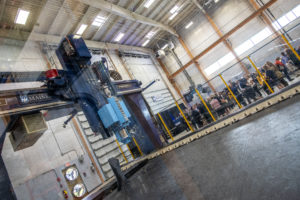
The Advanced Structures and Composites Center 3D printed a prototype house using sustainable composite materials on its custom Ingersoll MasterPrint® 3X, which features an integrated CNC 5-axis machine for cutting, surface finishing and part geometry finishing.
Photo Credit: University of Maine
Susan Keen Flynn is managing editor of Composites Manufacturing magazine. Email comments to sflynn@keenconcepts.net.

SUBSCRIBE TO CM MAGAZINE
Composites Manufacturing Magazine is the official publication of the American Composites Manufacturers Association. Subscribe to get a free annual subscription to Composites Manufacturing Magazine and receive composites industry insights you can’t get anywhere else.






